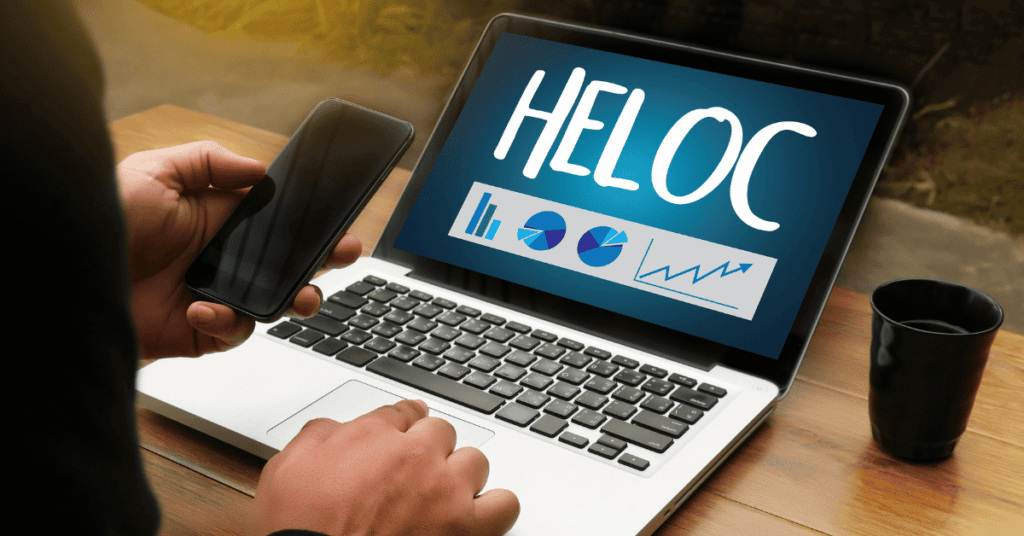Unlock Your Home Equity with Figure
- Approval in 5 minutes. Funding in as few as 5 days
- Borrow $20K-$400K
- Consolidate debt or finance home projects
- Fastest way to turn home equity into cash
- 100% online application
When you need money, a HELOC or personal loan can provide it.
But each of these loans will affect your financial life in different ways.
Here’s how to make sure you get the right kind of loan.

Here’s the answer in a nutshell:
Get a HELOC if: You have home equity, you want the lowest possible interest rate, and you’re borrowing for a long-term expense
Get a personal loan if: You rent or haven’t built home equity yet — or you have a short-term need that doesn’t warrant borrowing against your home
Low interest rates and low fees make home equity lines of credit, also known as HELOCs, appealing.
But a deal this sweet has to come with a tradeoff, and here it is: You’ll be borrowing against the value of your home which means putting your home on the line.
If, for some reason, you couldn’t make the HELOC’s payments, the lender could foreclose on your home.
So you shouldn’t tap into home equity without a good reason. It’s better to save this asset for the right thing. For many homeowners, HELOCs are the answer:
Adding a pool, turning a half bath into a full bath, updating the kitchen? These kinds of projects will add value to your home and increase your quality of life going forward.
By getting a HELOC to pay for these improvements, you’re using your home value to grow your home value. It’s an elegant win-win.
Thinking about becoming a real estate investor? A HELOC on your primary residence could generate the cash you need for a large down payment on a rental property loan. Again, you’re leveraging your existing real estate value to acquire more property.
For most people, paying off old credit card debt won’t be as exciting as buying or renovating a home. Neither will a divorce-related spouse payout. But using a HELOC to consolidate higher-interest debt can help you escape debt faster. That way you can finally stop paying for the past and start investing in the future.
If the only thing standing between you and a higher salary is a college degree, using a HELOC to pay for tuition and books might make sense. There are other ways, such as federal student loans, to make this happen, though.
Tax filers who write off all their expenses like mortgage loans because they can write off the mortgage interest, assuming the loan was to buy, build or substantially improve a primary residence. This won’t help simple tax filers who take the standard deduction.

A HELOC is a line of credit, much like a credit card, but with the value of your home securing the loan. It’s this security that lets you borrow at low rates.
When you withdraw funds from the credit line, you’re essentially selling the HELOC lender a chunk of your house. As you make payments, you slowly buy that part of your home’s value back.
With most HELOCs you can withdraw and repay funds continuously for 10 years while paying a variable interest rate on the loan’s monthly balance. Then, the loan converts to fixed payments for the remaining 20 years of the loan.
After you apply, there’s some legwork required to evaluate your home and set up a lien, so HELOCs could take several weeks to close. Some lenders can turn them around within a few days. If you’re in a hurry, shop around for a fast lender.
Personal loans are simple. The lender pays you a lump sum and you agree to repay the money with interest. You won’t usually post collateral, so the lender has no way to cover its loss if you fail to pay.
More risk for the lender translates into higher interest rates for you, the borrower, especially when compared with secured loans like HELOCs and auto loans.
With a personal loan, your interest rate will depend mostly on your credit score. Borrowers with lower credit scores pay higher rates — and they often face steeper loan origination fees, too.
Still, it’s hard to beat a personal loan’s convenience and simplicity. They’re a good option:
Maybe you need a root canal right now and don’t have dental insurance. Maybe you filed taxes and discovered you owe Uncle Sam a couple grand. Whatever the reason, a personal loan can provide cash within a few days.
Most secured auto loans won’t finance a car that’s more than 10 years old and has more than 100,000 miles. But what if you want a 12-year-old car that has 110,000 miles? A personal loan could make it happen.
Compared to the interest you’re paying on four or five different credit cards, a single personal loan’s fixed interest rate and payments could save you money while helping you climb out of debt faster. HELOCs save more if you don’t mind capturing home equity.
Instead of using a store credit card to buy furniture or appliances, you could use a personal loan. If you have excellent credit, you could save a lot in interest with a fixed-rate personal loan.
And, unlike with a HELOC, you wouldn’t be putting your home value on the line for something like a new washing machine.
When you get a personal loan, you make a promise to repay the balance by making regular monthly payments throughout the loan’s term.
Your promise means more when it’s backed by a higher credit score — a 740 FICO score, for example. Borrowers with average credit will have fewer loan options and face higher interest rates on personal loans.
HELOCs work better for borrowers with average credit because the presence of home equity takes some of the emphasis off the borrower’s credit score.

Personal loans cost more but are easier to get.
HELOCs offer flexibility and savings, but they take longer to close.
If you could still go either way, these payment examples based on common rates and terms may help you decide:
| 6%* | 6.5%* | 7.5%* | |
|---|---|---|---|
| $10,000 | $63 | $66 | $73 |
| $25,000 | $153 | $161 | $178 |
| $50,000 | $303 | $319 | $352 |
| 8%* | 10%* | 13%* | |
|---|---|---|---|
| $10,000 | $203 | $212 | $228 |
| $25,000 | $507 | $531 | $569 |
| $50,000 | $1,014 | $1,062 | $1,138 |
*Rates are for example purposes only and may not be available. Your rate could be different. Get a personalized quote here.
As shoppers, we all know that purpose matters. For example, you wouldn’t buy snow boots to run a half marathon. You wouldn’t buy a recliner when you needed new formal dining chairs.
The same logic applies to loan shopping. Your new loan should fit your needs as a borrower.
If you need a small amount of money quickly, a personal loan is probably the right fit.
But if you’re borrowing for a long-term purpose and want the best possible interest rate, you should bring home a HELOC.

Our advice is based on experience in the mortgage industry and we are dedicated to helping you achieve your goal of owning a home. We may receive compensation from partner banks when you view mortgage rates listed on our website.

